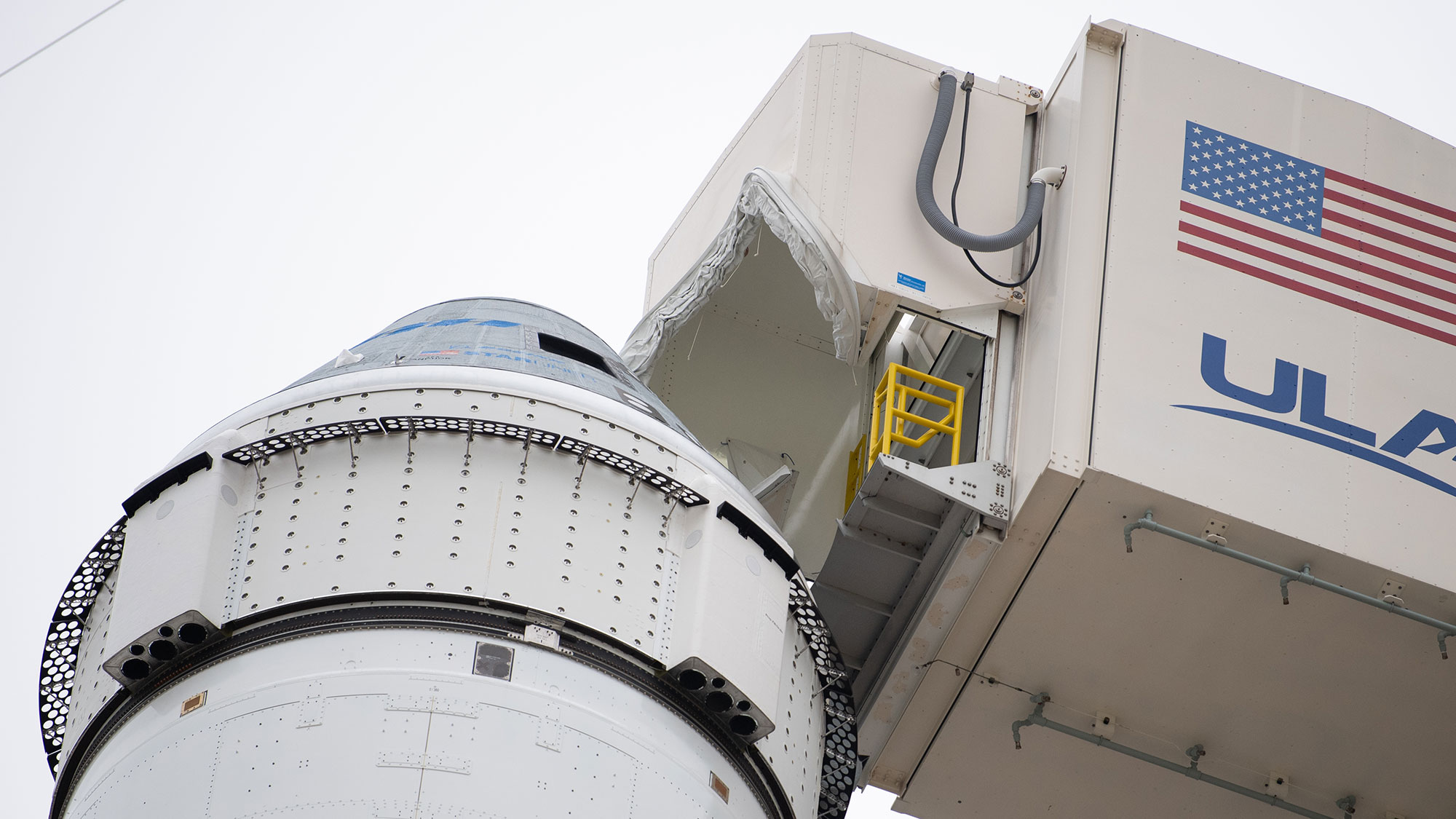Boeing's Starliner Won't Reach Space Station After Launch Anomaly, NASA Chief Says
CAPE CANAVERAL, Fla. — Boeing's Starliner astronaut taxi suffered an anomaly today (Dec. 20) during its flight to the International Space Station during the Orbital Flight Test (OFT) mission.
About 90 minutes after blastoff, NASA Administrator Jim Bridenstine said on Twitter that the capsule will not be able to reach the space station because it burned too much fuel during the anomaly. However, the administrator emphasized that NASA still considered the flight valuable and a positive step toward sending astronauts to space on commercial vehicles.
"Today, a lot of things went right, and this is in fact why we test," Bridenstine said. "if we would have had crew in there, number one, they would have been safe."
Related: Boeing's 1st Starliner Flight Test in Photos
Bridenstine, as well as Jim Chilton, Boeing's senior vice president of the space and launch division, announced during a news conference held this morning that the initial plan was to keep the spacecraft in orbit for about two days, although that stay could be extended. Between now and then, engineers will gather more data on what happened and meet additional goals of the demonstration flight.
The Atlas V rocket built by United Launch Alliance successfully blasted off from Space Launch Complex 41 here at Cape Canaveral Air Force Station in Florida at 6:36 a.m. EST (1136 GMT), as planned.
About 15 minutes after launch, Starliner was scheduled to complete a 40-second orbital insertion burn that would have evened out its orbit to a circle, allowing it to meet up with the space station. But this stage in the flight didn't go as planned.
Breaking space news, the latest updates on rocket launches, skywatching events and more!
"After launching successfully at 6:36 a.m. Eastern Time Friday on the United Launch Alliance Atlas v rocket from Space Launch Complex 41 at Cape Canaveral Air Force Station in Florida, the Boeing Starliner space vehicle experienced an off-nominal insertion," Boeing spokesperson Kelly Kaplan told reporters at the press site about an hour after OFT's launch.
During a full news conference later in the morning, Bridenstine and Chilton explained that the capsule's clock, which is programmed to govern the spacecraft's activities, somehow misinterpreted the stage of the mission. This error, which engineers refer to as an anomaly with the Mission Elapsed Time, triggered the capsule to over-control its location and burn too much fuel.
Mission personnel attempted to override the programming with commands sent from Earth, but the spacecraft didn't receive them fast enough, likely because it was between two tracking satellites, Bridenstine said.
By the time ground control had established the necessary communications with Starliner, the capsule had burned too much fuel to safely dock with the International Space Station and return to Earth.
Instead, Bridenstine said, the team was planning to spend two days in orbit before returning. As it would have after a successful docking, the capsule will land in New Mexico, using air bags to soften the touchdown.
Testing that landing is a crucial priority for the Boeing team, Chilton said.
During his remarks, Bridenstine emphasized that had astronauts been onboard today's flight, they would have been safe throughout the anomaly. In fact, they may have been able to pull Starliner out of automatic mode and manually correct the engine burns to reach the space station.
The OFT was designed as a critical milestone to test Starliner for future crewed missions. Following this procedure, Boeing plans to launch a Crewed Flight Test with three astronauts onboard Starliner that would visit the space station.
Bridenstine suggested that depending on a thorough analysis of today's flight, such a crewed mission may be able to proceed even though Boeing was not able to dock with the space station during this test.
NASA hired both Boeing and SpaceX to develop reusable vehicles capable of bringing humans safely to and from the space station. Ever since the 2011 retirement of the space shuttle, the agency has been relying on Russian Soyuz spacecraft for access to the orbiting laboratory.
Prior to today's launch, both Boeing and SpaceX were targeting crewed test flights in 2020.
Editor's note: This story was updated at 8:35 a.m. with comments from Kaplan, at 9:01 a.m. with additional comments from Bridenstine, and at 2:37 p.m. with comments from Bridenstine and Chilton's news conference.
- Boeing's CST-100 Starliner Space Capsule (Infographic)
- How Boeing's Starliner Orbital Flight Test Works: A Step-By-Step Guide
- Starliner's Atlas V Rocket Ride Is Wearing a 'Skirt' for Launch. Here's Why.
Follow Chelsea Gohd on Twitter @chelsea_gohd. Follow us on Twitter @Spacedotcom and on Facebook.


Chelsea “Foxanne” Gohd joined Space.com in 2018 and is now a Senior Writer, writing about everything from climate change to planetary science and human spaceflight in both articles and on-camera in videos. With a degree in Public Health and biological sciences, Chelsea has written and worked for institutions including the American Museum of Natural History, Scientific American, Discover Magazine Blog, Astronomy Magazine and Live Science. When not writing, editing or filming something space-y, Chelsea "Foxanne" Gohd is writing music and performing as Foxanne, even launching a song to space in 2021 with Inspiration4. You can follow her on Twitter @chelsea_gohd and @foxannemusic.




